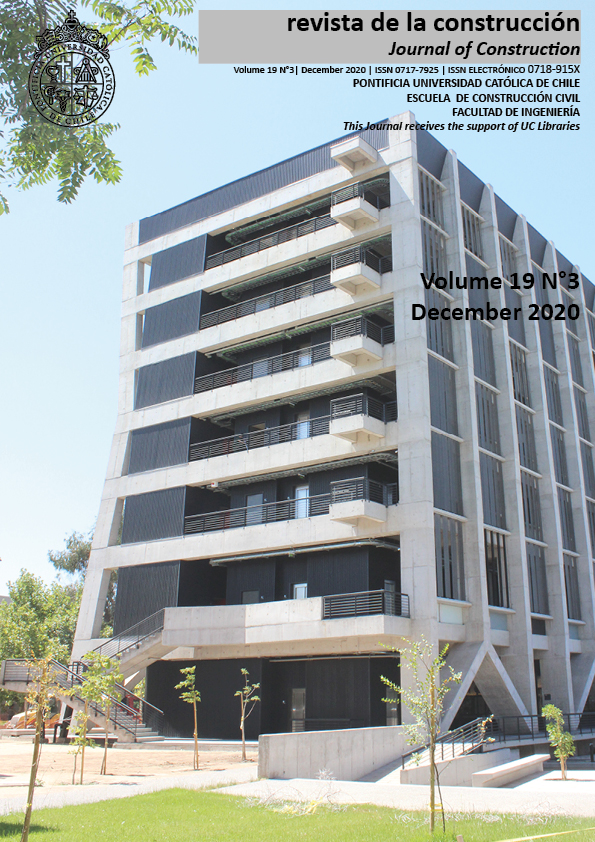Adobe bricks with sugarcane molasses and gypsum to enhance compressive strength in the city Cogua, Colombia
DOI:
https://doi.org/10.7764/rdlc.19.3.358-365Keywords:
sugarcane molasses, adobe, gypsum, compressive strength, bricksAbstract
This paper presents a case study over the effect of adobe bricks stabilized with gypsum, sugarcane molasses and both combinations on improving the compressive strength. These bricks were produced by a hand-made process, which was empirical and had not been analyzed. All samples had the same unit weigh and aspect ratio to obtain accurate data. An extensive series of test were conducted on adobe bricks stabilized with gypsum (5%, 10% and 15%), sugarcane molasses (5%, 10% and 15%), and gypsum in combination of sugarcane molasses (5%, 10% and 15%) which were cured for one month. From the test results it is showed that the grain size distribution was not optimum, which led to samples stabilized with gypsum alone and sugarcane molasses alone did not overcome the sample control strength. The former increased the strength, but the later decreased it. Although, the sample stabilized with 2.5% gypsum and 2.5% sugarcane molasses had the best strength (2.15 MPa). This case study will be useful to better understand the compressive strength on adobe bricks stabilized depends on percentage of clay and sand fraction, moisture content, and percentage of stabilizer, which means that natural stabilizers could be an environmental solution to improve mechanical behavior.





